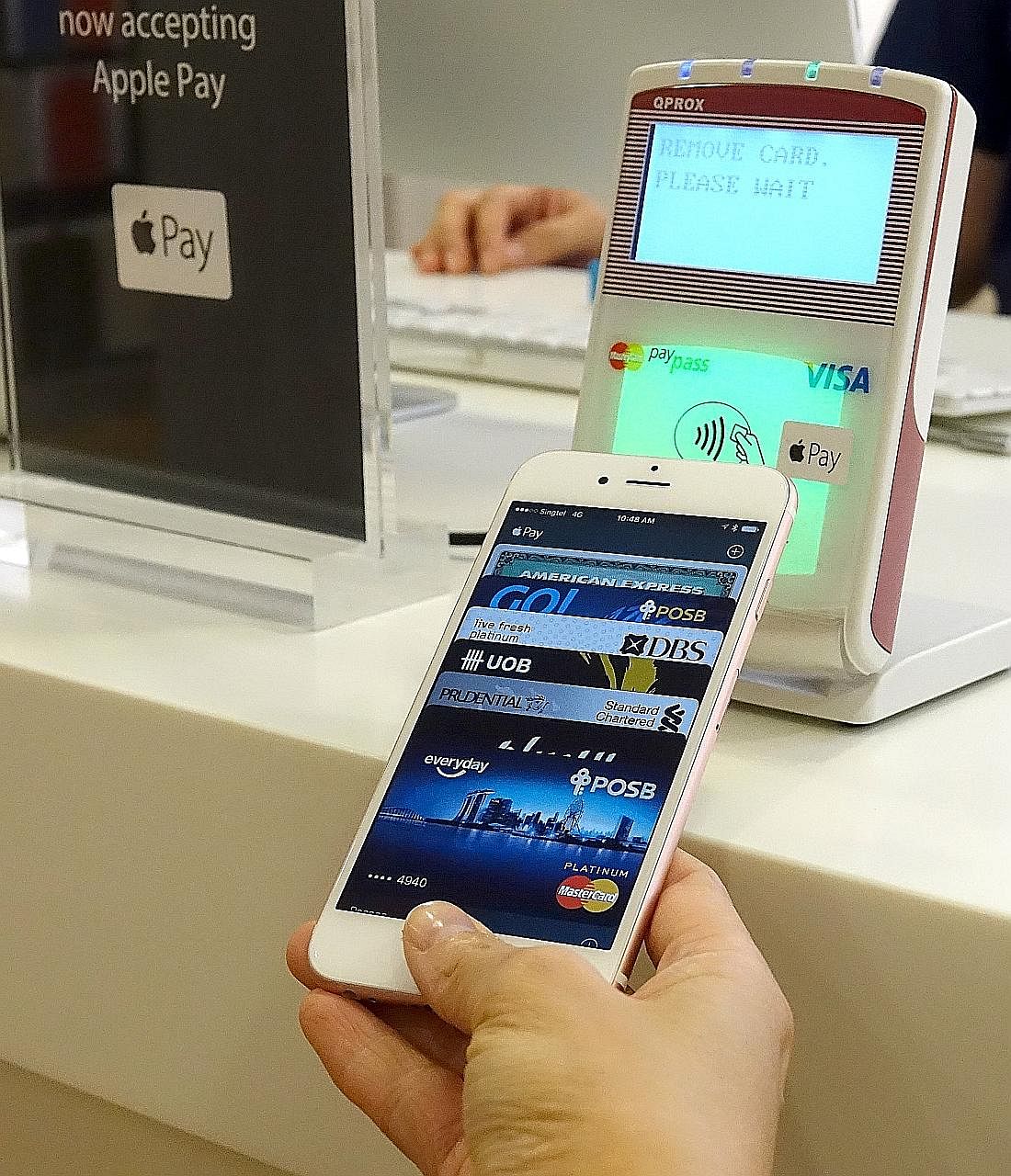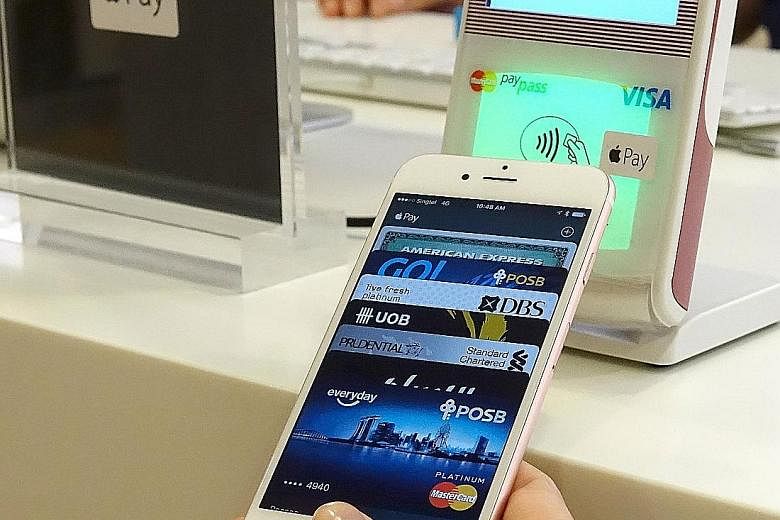"No, we don't have Apple Pay," the cashier at the Singapore Petroleum Company (SPC) petrol kiosk told me. She was clearly unaware that Apple Pay is available at SPC.
With two people in the queue behind me holding their credit cards and tapping their feet, I decided not to bother and paid with my Amex card instead.
I've encountered other hiccups when trying to pay with Apple Pay at other places. At Starbucks, a staff asked me "Visa or Amex?" and rolled her eyes when I told her only Amex can be used with Apple Pay. This was during the initial launch of the mobile payment service.
But while the people behind the counter should know their stuff, I am finding it hard to blame cashiers these days for not keeping up with the myriad of payment schemes that are crowding their cash registers.
I, too, have to pause when facing the many payment terminals - one for the traditional magnetic-stripe credit card, one for Nets and one for Near Field Communication (NFC) contactless payment - when paying at stores and supermarkets.
I shudder to imagine the confusion that might arise when Samsung Pay - slated to be out by this month - becomes available. The poor cashiers will have to deal with another wave of eager customers wanting to try another new payment method.
That's why I can't wait for the new wave of unified point-of-sale (POS) terminals, which are being pushed by the Government and major banks, to become widespread.

They should help make things easier for both cashiers and consumers. That's because they accept all cards including Nets, regular credit cards and contactless cards, which means they can accept Apple Pay and Samsung Pay as well.
Just last week, I was trying to use Apple Pay at Uniqlo but that particular counter happened to lack the contactless payment terminal. I wouldn't have this problem with a unified POS terminal.
Furthermore, cashiers need to learn to use this one machine only, instead of three or four terminals.
United Overseas Bank (UOB) has already rolled out 1,000 such unified POS terminals and is targeting to increase that number to 10,000 over the next two years. OCBC Bank and DBS are also working to increase their unified POS terminal deployment.
Recently, Wirecard Singapore and Nets announced that they will collaborate to provide unified POS terminals for Singapore government agencies.
This means that users can even use their Nets FlashPay, ez-link and concession cards on a single POS terminal when using the services of government agencies such as the Housing Board and Land Transport Authority. Currently, there are three machines for these three different cards.
Once implemented, there will be around 500 unified POS terminals across all these government agencies, whereby you can also use your contactless credit cards or mobile e-wallets for payment.
Having just one unified POS terminal might also mean it is easier for hawkers or your neighbourhood coffee shops to adopt.
I think if a technology is easy enough, everyone will adopt it. In fact, I am hopeful that paying for bak chor mee at my favourite hawker stalls by tapping with my phone can become a reality soon, with the proliferation of the unified POS terminal.


